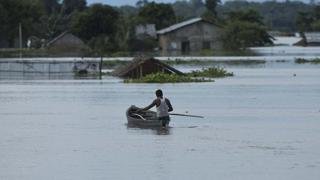Top scientists backed by the ruling Communist Party of China are working on a plan to drain the Yarlung Tsangpo (Brahmaputra) river near the Indian border and divert the water through a 1,000-km tunnel, the world’s longest, to arid Xinjiang.
The Tsangpo flows into India through Arunachal Pradesh as the Siang before becoming the Brahmaputra in Assam – the source of life and livelihood for millions in the country’s northeast.
The tunnel project, submitted to the government in March, is in the blueprint stage but could trigger a serious water crisis in India’s northeast if implemented as the Tsangpo is an upper riparian river.
Chinese engineers are “testing techniques” that could be used to build the 1,000-km tunnel to carry water from Tibet to the Taklimakan Desert in Xinjiang, Hong Kong-based South China Morning Post reported, citing experts involved in the project.
Even by China’s standards, the project is massive. The country’s longest tunnel is the 85-km Dahuofang water project in Liaoning province, while the world’s longest tunnel is the 137-km water supply pipe beneath New York.
The recommendation from the scientists is simple – drain the Tsangpo in Tibet Autonomous Region and tunnel it to Xinjiang Uyghur Autonomous Region, which lies in the rain-shadow area of the Tibet plateau. The proposed tunnel will drop from the world’s highest plateau, its multiple sections connected by waterfalls.
Wang Menshu, China’s top tunneling expert, suggested the government “drain the Yarlung Tsangpo River at Sangri county in southern Tibet, near the disputed border with India”, the report said.
Another leading scientist, Wang Wei, who helped draft the tunnel proposal, told the newspaper more than 100 scientists had formed teams for the nationwide research effort.
The scientists are aware India and Bangladesh would protest against the project but are ready to implement it anyway.
“Wang said the project would also prompt protests from India and Bangladesh, which lay downstream. But compared to other proposals, which would require the construction of massive dams on the river, the underground tunnels would leave Tibet’s natural landscape largely unscathed,”
Hi! I am a robot. I just upvoted you! I found similar content that readers might be interested in:
http://www.hindustantimes.com/world-news/china-plans-1-000-km-tunnel-to-carry-brahmaputra-water-from-tibet-to-xinjiang-report/story-QBmxl7rMgmd8UW6pKV7VSL.html
Downvoting a post can decrease pending rewards and make it less visible. Common reasons:
Submit